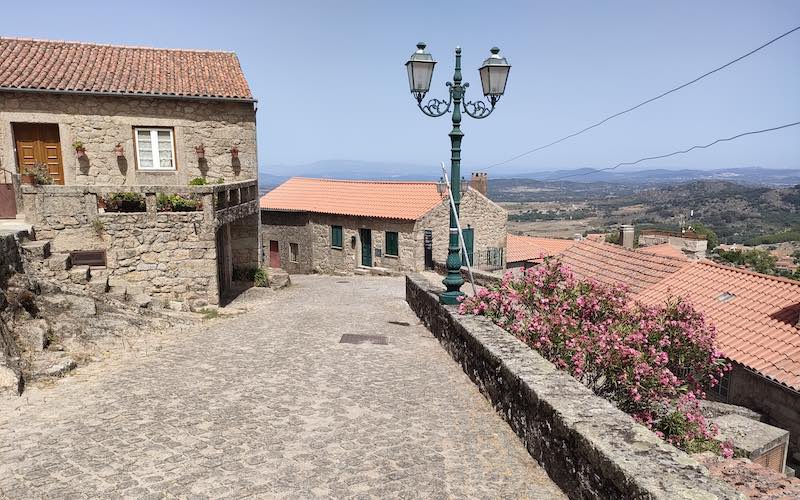If you are staying anywhere near Monsanto in Portugal then please take some time to visit this beautiful and authentic mountain top village. The Castle was used in the filming of the Game of Thrones, the restaurants are traditional and the views will amaze you.
I spent one day in Monsanto and totally loved it. I found the boulder houses, went inside ‘La Gruta (grotto), had a drink in the Lusitania Tavern, hiked to the Game of Thrones castle, found a ruined Church and had dinner in Casa da Gruta.
Templeseeker is a participant in the Amazon Services LLC Associates Program, an affiliate advertising program designed to provide a means for us to earn fees by linking to Amazon.com and affiliated sites. Other affiliate links may be used in this article on Monsanto, but they do not impact on the price that you pay and they do help me to get this information to you for free. Read my privacy policy for more information regarding affiliates.
How to get to Monsanto Portugal
It’s quite difficult to access Monsanto in Portugal. In fact, it is basically impossible to get to without your own transport. No buses go up Monsanto and there is no train station. You will need a car of your own or a private tour. If you are brave enough and fit enough you may decide to tackle it by bike!
I would recommend Beira Tours – Francisco, the local guide who runs these tours is very friendly and extremely knowledgable about the area. You can book a tour of Idanha-a-Velha, Monsanto and Penha Garcia on Get Your Guide and see three amazing villages in just one day!
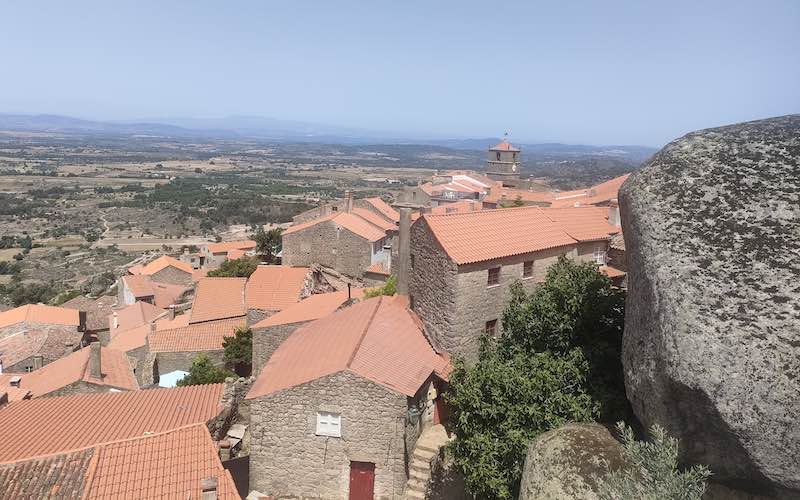
When to Visit Monsanto Portugal
There is a lot of hiking and climbing involved in a trip to Monsanto, so be prepared for some steep and uneven ground. It’s not too strenuous – Francisco said that he has even taken 70 year olds up to the top of Monsanto and they have managed it and really enjoyed the trip! But you do need to have a regular level of fitness and mobility. It’s not suitable for anyone requiring walking aids or wheelchairs unfortunately, although you might get to the base of Monsanto and enjoy the restaurants there.
Out in Beira Baixa, it gets VERY hot in the summer months and so I would recommend avoiding July and August. I went in early August and it was already too hot! Also I would recommend avoiding December and January which are the winter months with the worst weather. The ideal time to visit Monsanto Portugal is in the spring months from March to May/June.
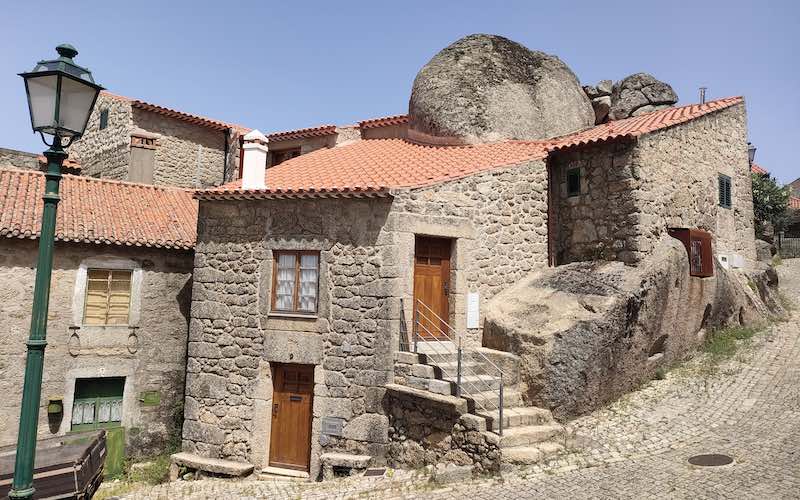
How long to spend in Monsanto and where to Stay
Monsanto is not very big and so you don’t need to stay over – you can see everything in one day, or even just a morning. Some people love the atmosphere and decide to stay over – there are quite a few Air BnB’s in Monsato if you would like to do this. Some of them are ‘boulder houses’ which have incorporated the rock boulders into the style of the houses – the sides of the boulders have formed the sides – pre-built houses! We even saw one house where the bottom of a boulder rock formed the ceiling – ingenious!
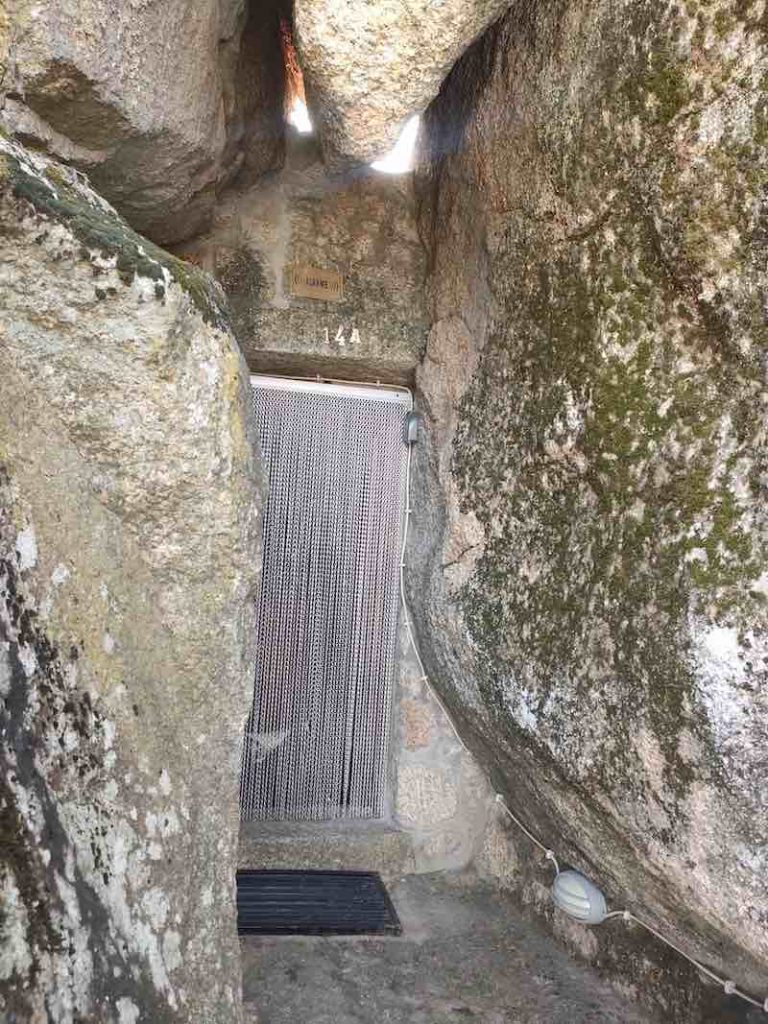
The Most Portuguese Village in Portugal!
Monsanto has its name as the ‘Most Portuguese village in Portugal’ and it really is as traditional and authentic as they come. But how did it get this name? Well in 1938 there was to commence a government sponsored competition held every year to nominate the most Portuguese village in Portugal. The thing is that the competition never actually ran again because of the amount of organisation needed! And so Monsanto won it in 1938 and has remained the ‘most Portuguese village in Portugal’ ever since!
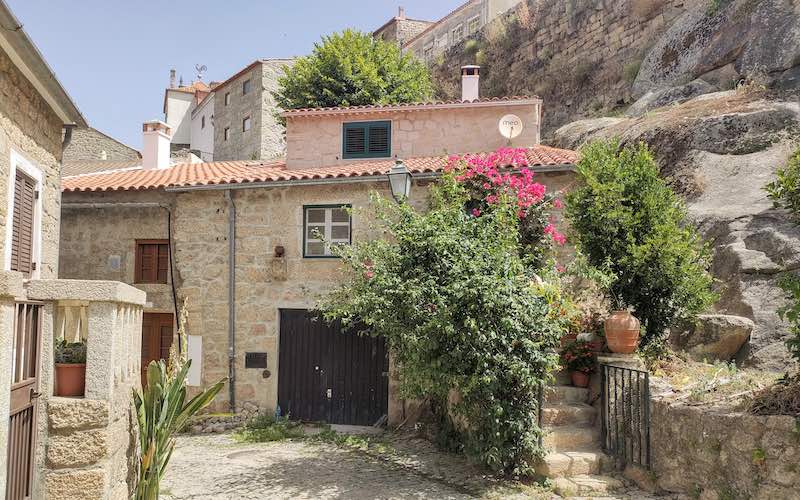
What to see and do in Monsanto Portugal
Drive up to the start of the village near to the canons and pillory. Park there and then you can walk the rest of the way up. It is almost impossible to take a car any further. The village itself is easy to navigate and well labelled, with information boards on the most important buildings. Don’t miss Casa do Carrasco, Gruta, Monsanto Castle and Capela de Sao Jaoa (ruined Church with beautiful back drop).
Canons
At the lower level near the stone pillory you will see a series of canons which used to be used to defend the medieval city.
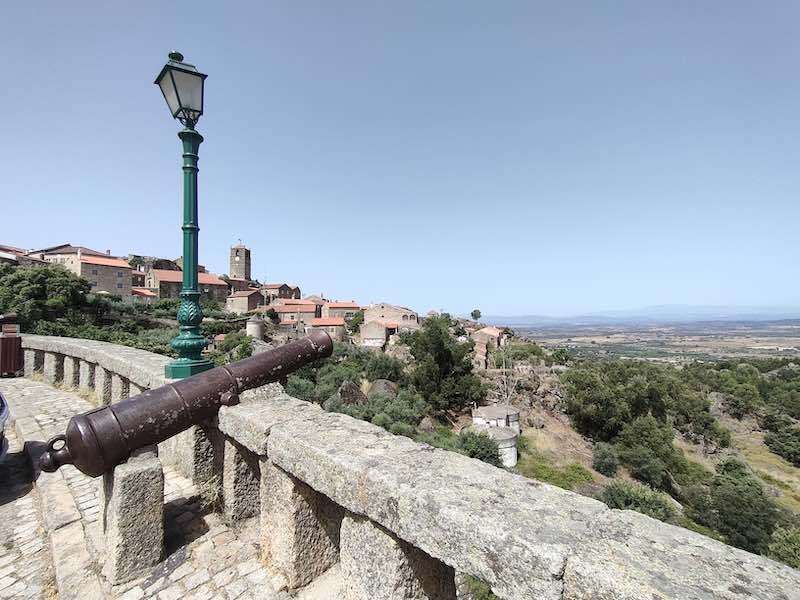
Stone Pillory
This is an extremely basic example of a stone Pillory consisting of a small platform which supports a base – a bell-shaped block -, with a flat column on top, finished with a cylinder. The strange shape of the pillory, which was restored in 1938 with pieces that were presumably found in the surrounding area, raises questions about its authenticity. When the village received its new charter it was undoubtedly provided with a contemporary pillory, which cannot be this piece since it is clearly not in the Manueline style. Its location on one of the rare squares in the settlement is consistent with the new administrative statute, though, which included the Town Hall and the jail, whose exact location is unknown. Pillories were traditionally used to hold the hands and head in place while criminals were subjected to public abuse, humiliation and even torture.
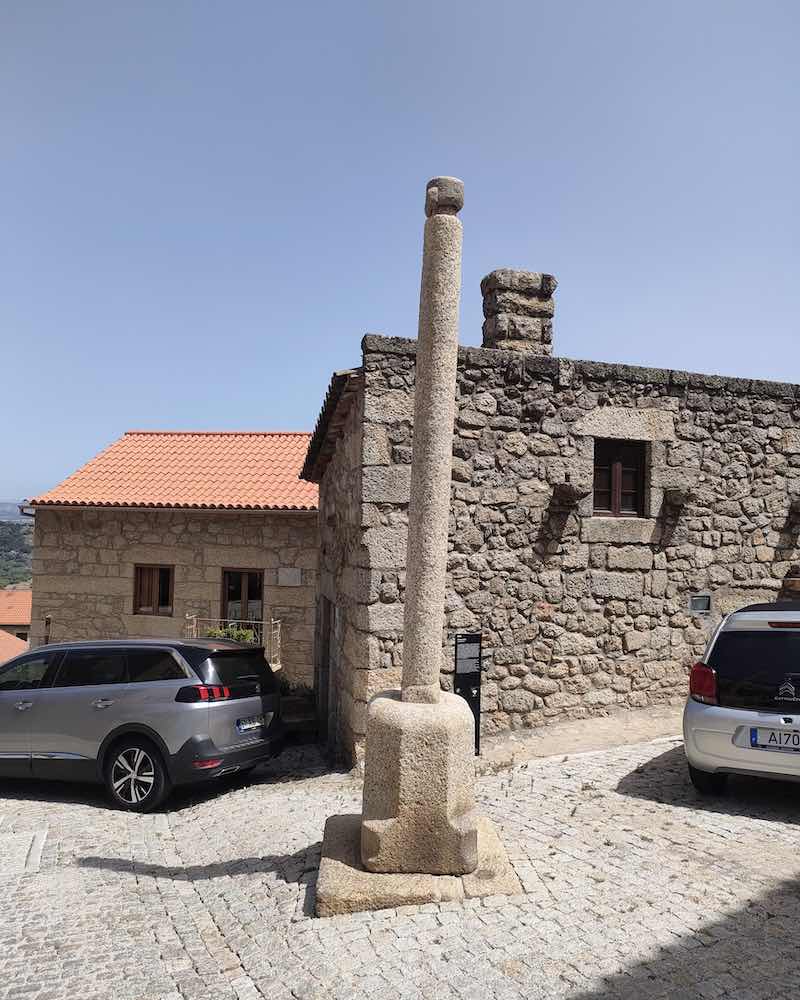
Antiga Capela da Senhora do Socorro Old Chapel of Our Lady of Succour
Shortly after the Pillory you will come to an old chapel that has been converted into a private house. This Baroque chapel was built in 1692 as a private venture and was privately managed. It has only one nave with an axial portal featuring a straight lintel with a lengthy inscription about its founding. It is topped by a cornice that supports a splayed window. After being abandoned and falling into ruin, it was restored in the 1940s, with a living area added and a shop installed on the ground floor. Although these works profoundly changed the volume and spatial organisation of the chapel, the typology of the building is still clear, since the elegant cornerstones in the shape of Tuscan pilasters have been retained; on the inside (sorry you cannot go in!), only the holy water font has been preserved.
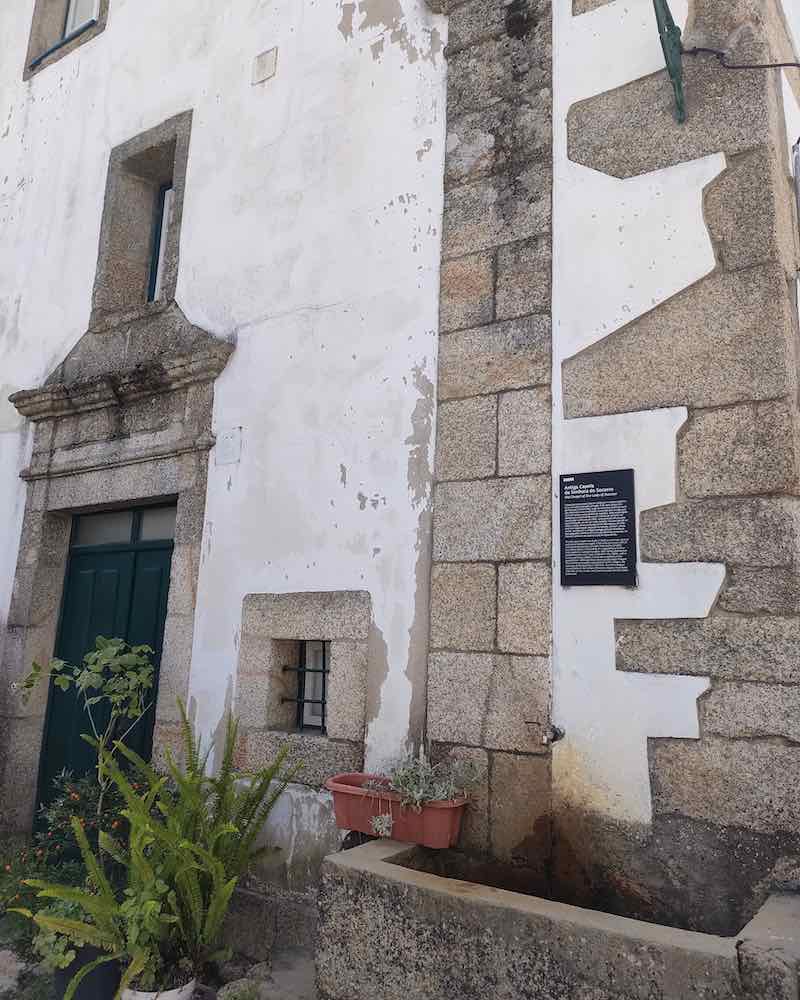
Converting a Portuguese chapel into a house – now that’s my dream dwelling!
Capela da Misericórdia Misericórdia Chapel
This late-Renaissance chapel has clear Mannerist influences. It has only one nave with an attached sacristy on the right-hand side. It was possibly the old hospital and, in an uncertain period, also a foundling wheel. The main façade, which faces east, has a vaulted portal, surmounted by a cornice with a recess recreating a portal with columns, crowned with a shell. It contains a replica of the image of Our Lady of Snows, the original of which is housed in the main church; it is flanked by two splayed recesses. In the almost unrecognisable interior, we find a retable in polychrome wood and a pulpit on the Epistle side.
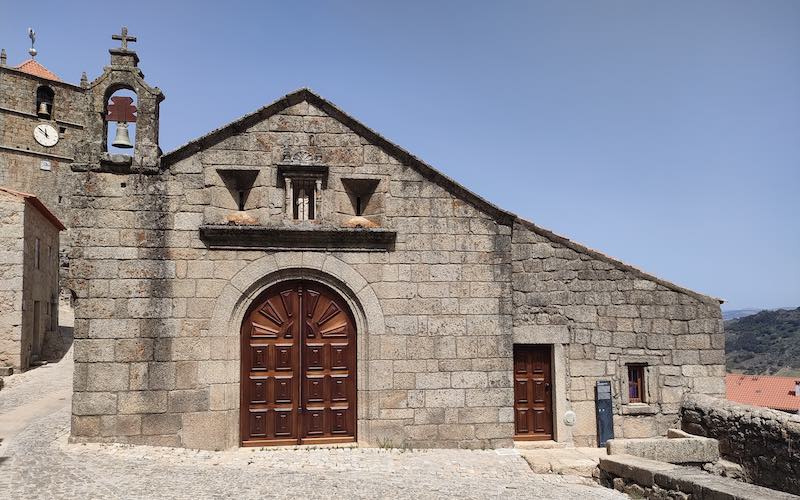
Casa do Carrasco
According to local oral tradition, No. 14 St. Antony’s Street is known as “Casa do Carrasco” – the Executioner’s House. We actually met the father of the daughter who now owns this house! It was here that the executioners of the judicial district of Monsanto were thought to reside – those who terminated the lives of those condemned to death or applied other sentences and torturous acts to extract confessions from the accused. Due to the vileness of the role, recruitment often took place among those who were condemned to death or banished from the country after their sentences were completed. This theory came about with the discovery of a lintel dating from 1601, on which is engraved a skull above two crossed tibiae, with the Latin words “cogita mortem” (which can be translated as think of death) scrawled adjacent. Hence, the macabre iconography depreciatively marked out the house against the anonymity of the urban landscape.
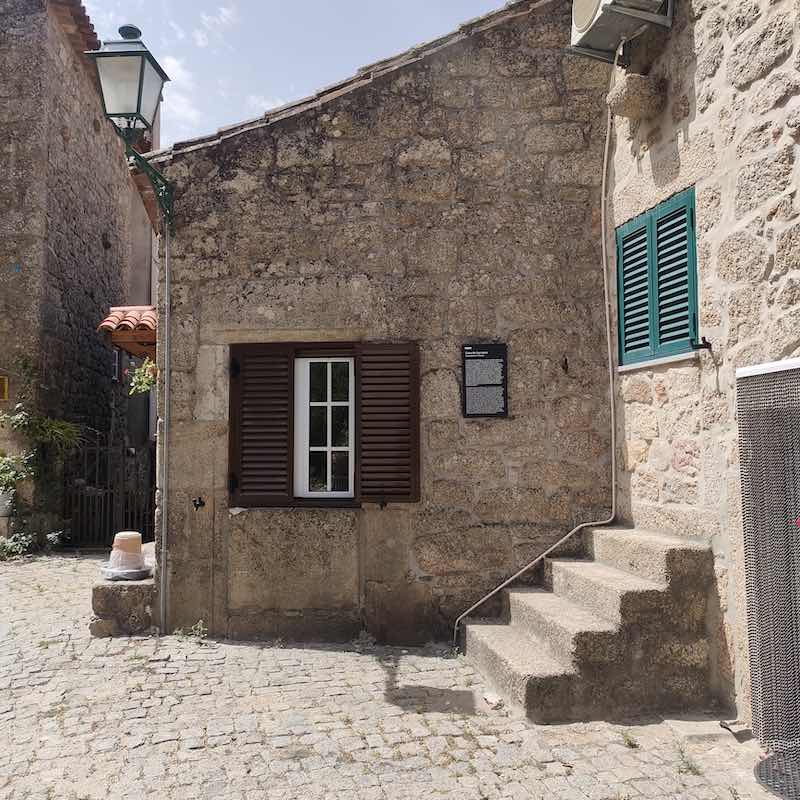
Fonte Ferreirro “Ferreirro” Fountain
Nestled in the corner of a large rocky outcrop on Ferreiro Street in the upper reaches of the village’s western flank, this fountain is representative of a rare typology: it is known as a “fonte de mergulho” (immersion fountain). A square basin was excavated into the rock, below street level, allowing water from the spring to be deposited and filtered, ensuring its freshness. A barrel vault covers the basin, where utensils for collecting the water are immersed, while the external covering is decorated with replicas of merlons. Opening to the street in the form of a round arch, it rests on a high parapet that keeps humans and animals safe while preventing contaminants from entering the basin. Its vaguely classical architecture means it is often referred to as a “Roman fountain”. The structure’s revivalist form dates back to the second half of the 19th century, a period of robust growth in the local population, which extended to the development of the surrounding neighbourhood.
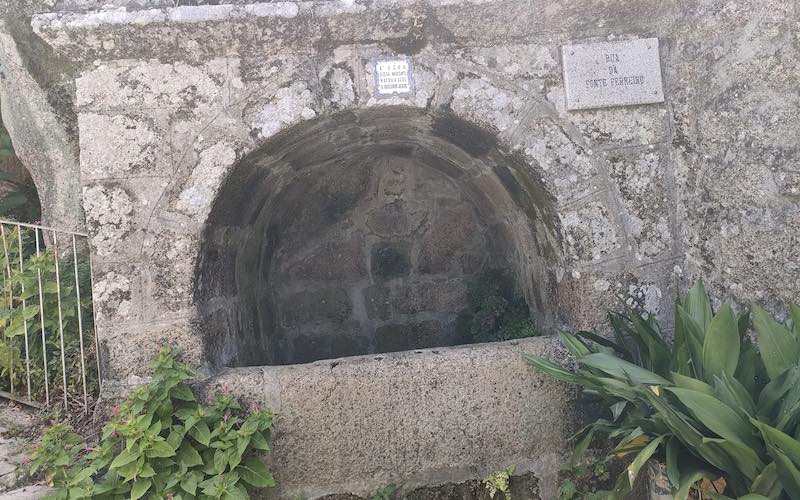
Gruta – The Head Rock of Monsanto
This shelter, previously a pigpen and today a quaint tourist spot, results from the open space at the base of various boulders. In the local popular architecture, as you have seen, it is common to integrate these large rocks into constructions. They often serve as walls, adapted or unmodified, or are partially used as roofs. At the top of Castel Street, for example, there is a house that is entirely covered by a colossal boulder, which locals call the “house with one tile”. Traditional popular architecture, spontaneous and organic, is incorporated into the topographical irregularities and co-exists with rocky outcrops and granite boulders, showing their unique identity with architectural solutions and materials that are adapted to the rough terrain yet are maladjusted to modern comfort.
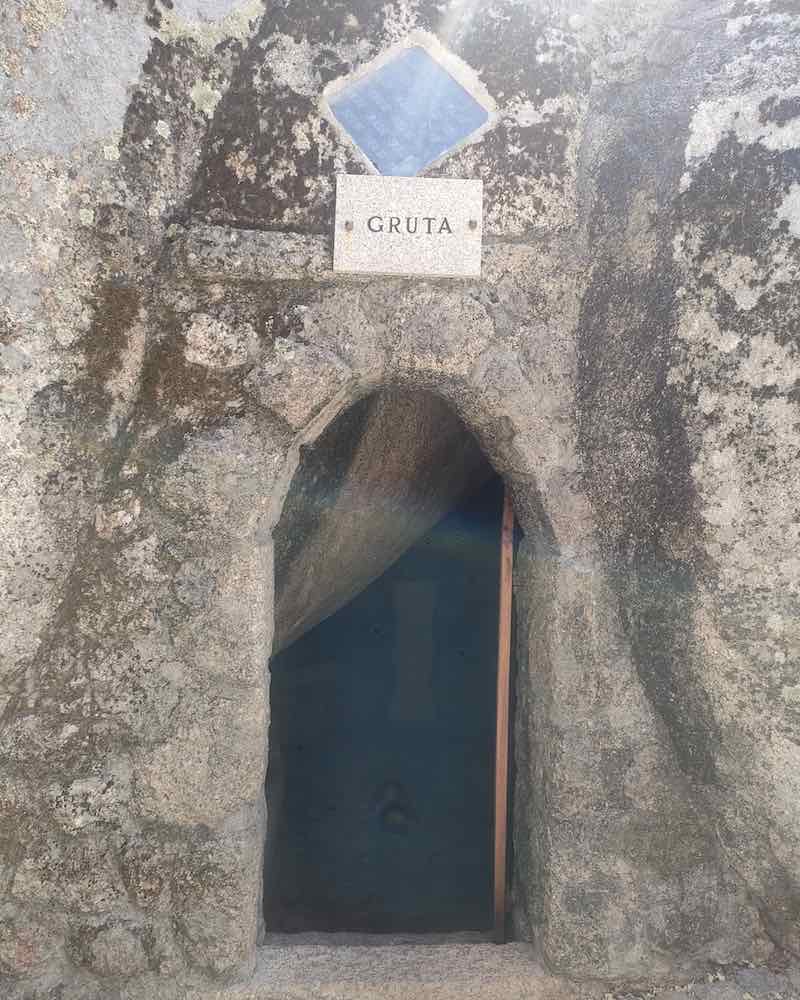
You can actually go inside ‘La Gruta’ but as it is cool and damp in there, it’s FULL of mosquitos so be quick and don’t take a flash light or you phone on! I’m afraid to say that one or two bit me!
Pig Pens
Walking up towards the castle you will be greeted by numerous medieval pig pens. Previously spread throughout the village, these pig pens or furdas were gradually centralised into this and other vacant plots of land for public health reasons and aligned organically along the edges of paths that climbed eastwards towards the castle. Most of these pigpens were built according to the traditional model: a shelter, most often circular in shape, with dry stone walls covered by a false dome – a roof formed by rocks stacked horizontally in successive rows until it was sealed – and covered over with earth. It also featured a door that opened onto a walled patio. Pigs were an important source of food over the long term as their meat could be transformed into sausage. Slaughtering them, or what was known locally as matação, was an important domestic task, which gave way to an annual festive ritual for families.
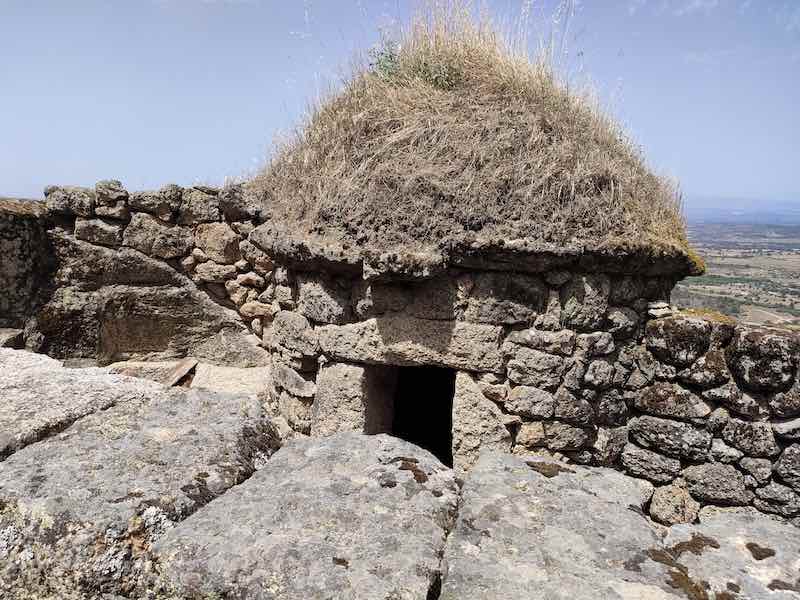
Monsanto Castelo
Walk up past the pig pens and you will be greeted by a stunning view of the castle. After the Tagus Line was recaptured in 1149, part of its defence efforts came under the purview of the Templars. The Line thus proceeded upwards and after reaching what is now Beira Baixa, curved to the northeast to follow the Ponsul River, where various castles were built to form a barrier against Muslim incursions.
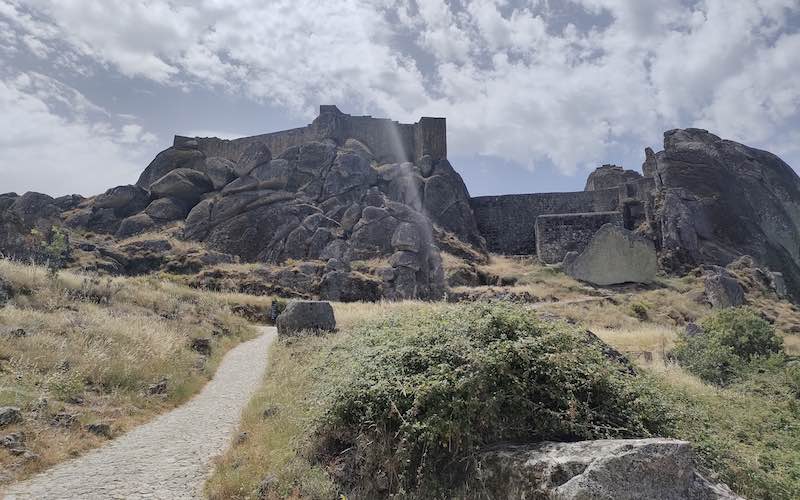
Here is a plan of the Castle to show what it looked like in its prime and with the main points of interest labelled…
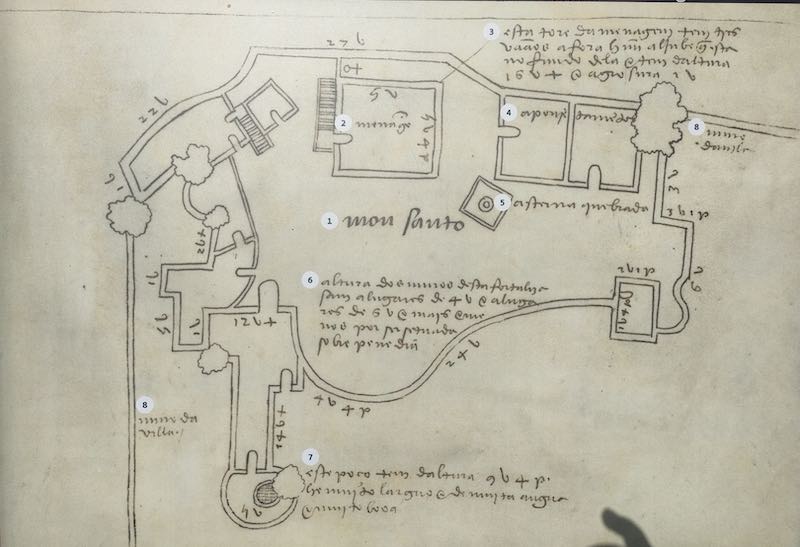
- Monsanto
- Menagem Keep – This keep’s tower has three floors
- Prison located at its bottom and has a height of 16 varas + and a thickness of 1 var
- Aposentamentos – Guest rooms
- Cisterna – cistern
- Fortress Walls – The height of this fortress’s walls are 4 varas in some places and In others, 6 varas, 4 palmos. It is very wide with plenty of fresh water
- Well – This well has a height of 9 varas, and it is very wide with plenty of fresh water
- Muro da vila Village wall
Ceded in 1165, Monsanto was one of the first places to be fortified as part of this operation (it replaced an earlier Muslim castle), although it was returned to the Crown in 1172. This Romanesque phase, which is barely recognisable today in the citadel, was followed by an extensive, reformist Gothic campaign in the late 13th and early 14th centuries in which the entire hillside was fortified. It was preserved during the Portuguese Restoration War, but later reconfigured in the 19th century. A large-scale renovation in the 1940s and 50s, which was questionable at times, resulted in the castle’s current configuration.
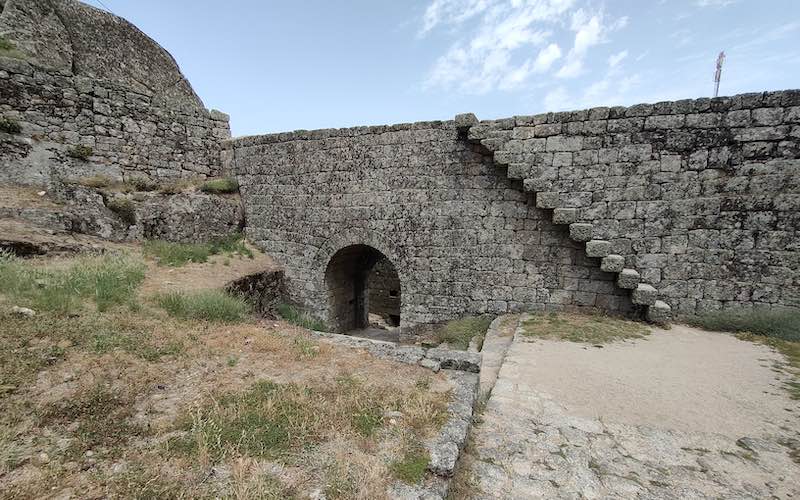
The castle built here by the Templars followed the simplified formula for fortifications that was adapted for small castles and highly modern at the time, which consisted of a walled patio and a single gate; in the middle of the enclosure, away from the walls, a keep was erected at the highest point to enable enemies to be fired on from above. Its quadrangular base on the ground floor did not have a door. In 1815, the keep, which had been converted into a magazine, exploded, leaving only the traces of its outline on the surviving rock.
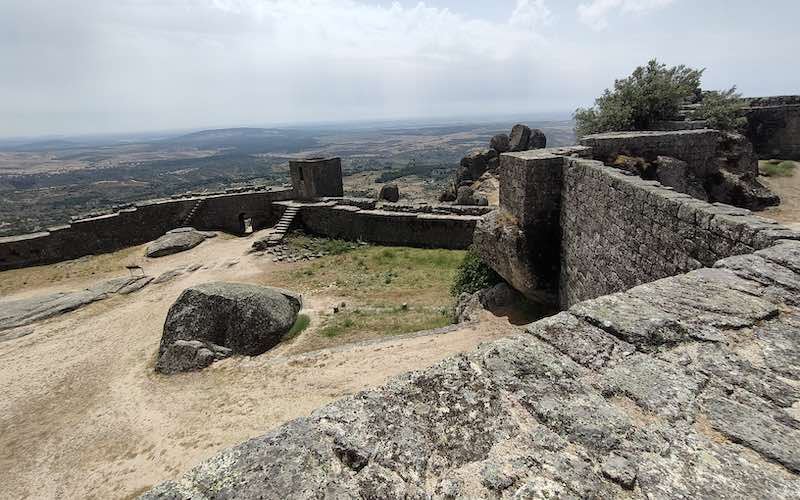
The festival of the Holy Cross, in which the ritual of throwing a pot of flowers re-enacts the siege of the village (also called the legend of Bezerro), is celebrated annually nearby on 3 May. The oval-shaped compound that is evident today – the citadel – largely follows the layout of the first castle, although it underwent major alterations in the early 19th century.
The Well (Labelled as the Cistern)
Located within the castle grounds is an erroneously named ‘Cistern’. It is a well that features two arches, but a collapsed covering. During the late medieval period this would have been the main source of water for the village – the tower was built strategically to protect the main water point. The well was recently cleaned out in a clean-up operation. the real ‘cisterns’ are to be found at the top of the citadel where you can see the remnants of the tanks and also remains of the base.
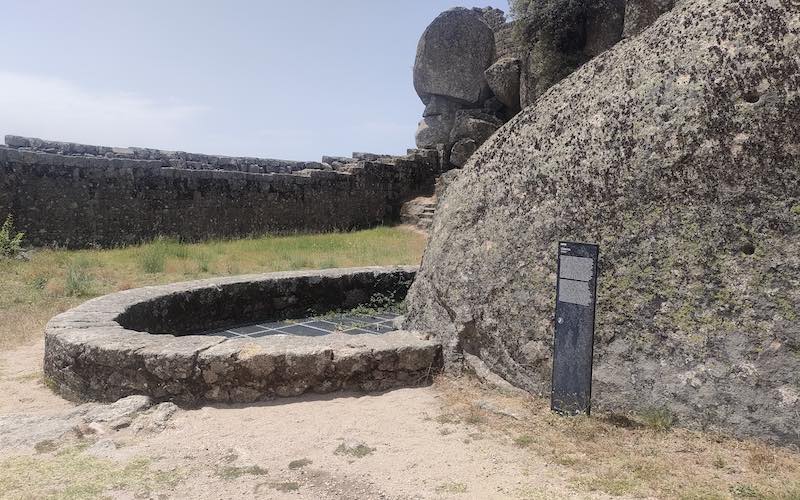
The Perimeter Tower
Medieval fortifications often featured only two gates, since doorways were weak points in their defence. The second gate (i.e. postern) was often known in Portuguese as the ‘Gate of Treason’ or the Hidden Gate. It was a hidden door, often small, that was intended to allow sorties against the enemy in siege situations. In the castle’s main historical floor plans, especially one that dates back to 1815, the current door does not exist, nor is it mentioned in a detailed military description dating from 1813. It was opened, or rather, cleared (since the gate does appear authentic) during the structural changes that took place in the 1940s and 1950s. On one of its flanks, a quadrangular tower demonstrates in part how Gothic towers would have kept time on the long enclosure. This tower is often incorrectly identified as a keep.
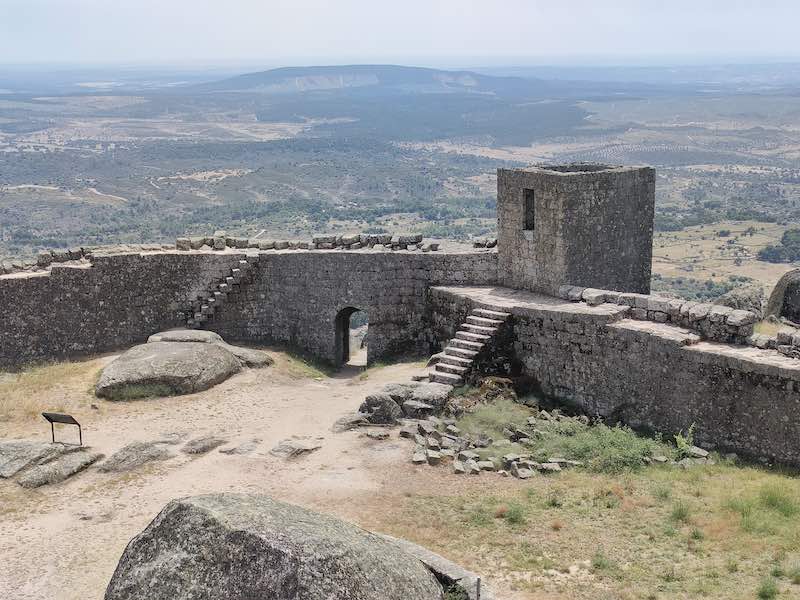
House of the Dragon
Here you may recognise the Game of Thrones film set – House of the Dragon. Directory Ryan Condal expressed this amazement at this fantastic Portuguese setting for the filming…
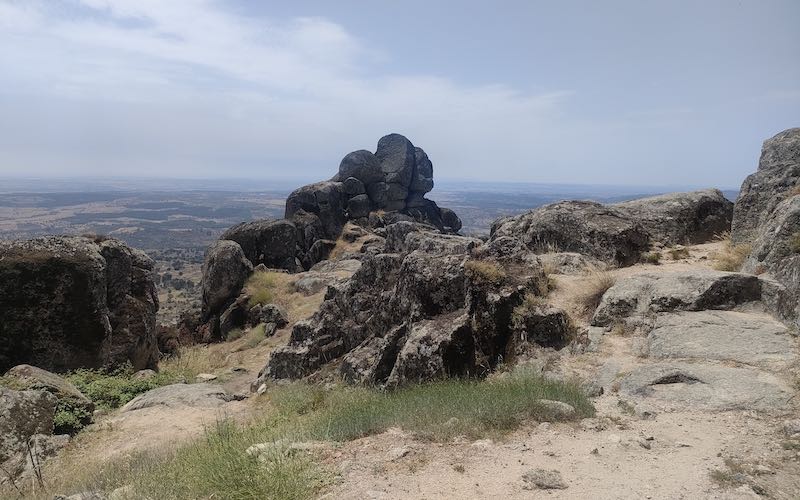
“The trip to Portugal was unprecedented for ‘Game of Thrones’ and even for the film industry in general. Therefore, there is a lot of Portugal to see on television”, he said, adding that Portugal is “a beautiful country and great for filming. When we saw Monsanto on a mountain, we found Dragonstone,”
Capela de Sao Miguel
This chapel in the north-east wing of the castle sits alone today. What grew around it was Monsanto, à centre of medieval colonisation. The building features a single näve and chancel. On the façade, we encounter a portal with a round arch. Its spare decoration only comes alive in the zoomorphism of its imposts and is only seen again in the modillions; however, the rest of the painted mortar indicates ornaments that were removed.
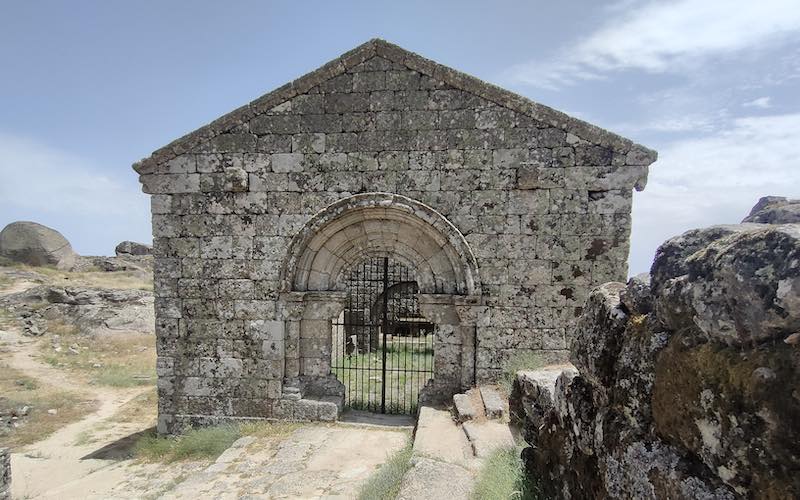
The bell tower was constructed atop an elevated rocky outcrop. Its construction dates from the late 12th or early 13th centuries. However, older remains that have been found suggest that the temple pre-dates this era. Restorative works in the mid-20th century resulted in its current form: a simple, stripped down building of archaic architecture, justified by its location on the periphery and border, which had not yet been completely pacified.
Look carefully on the side of the chapel – although much of the embellishment has eroded away, you can still make out the boobies and penis haha!
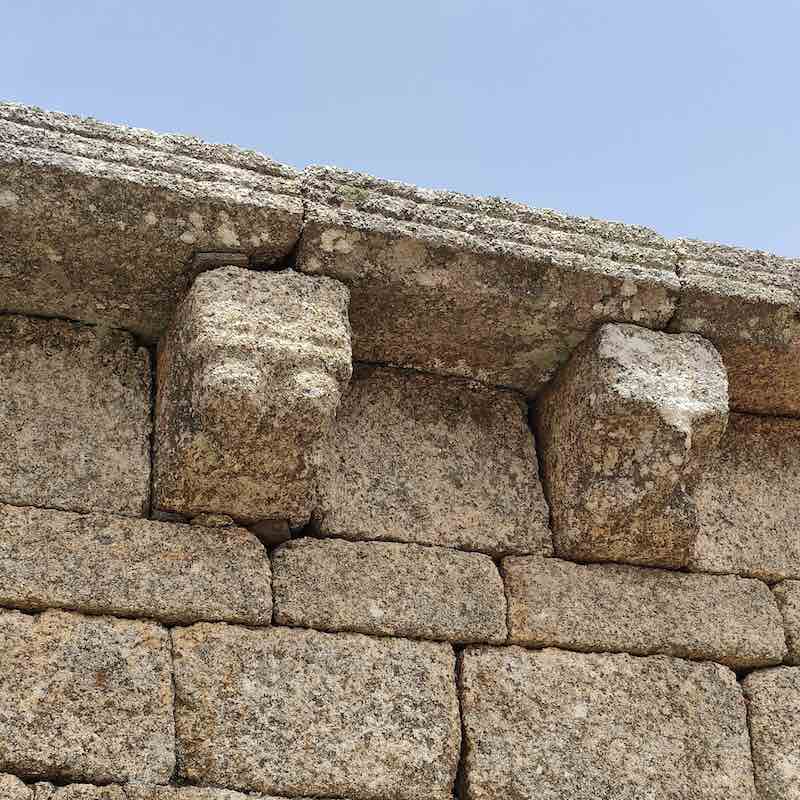
Surrounding the chapel is a necropolis that pre-dates its construction but is also coeval in its existence. Most of the graves in this cemetery are exposed on the rocky outcrop, lain out in anthropomorphic, rectangular or trapezoidal shapes. In rare cases, there are sarcophagi and other types such as headstones. The interior of the chapel was also used for burials, while Gothic arcosolia were created outside to house tombs. It was extended over a long period between the 12th century, or earlier, and the 14th century, ending in the early 19th century.
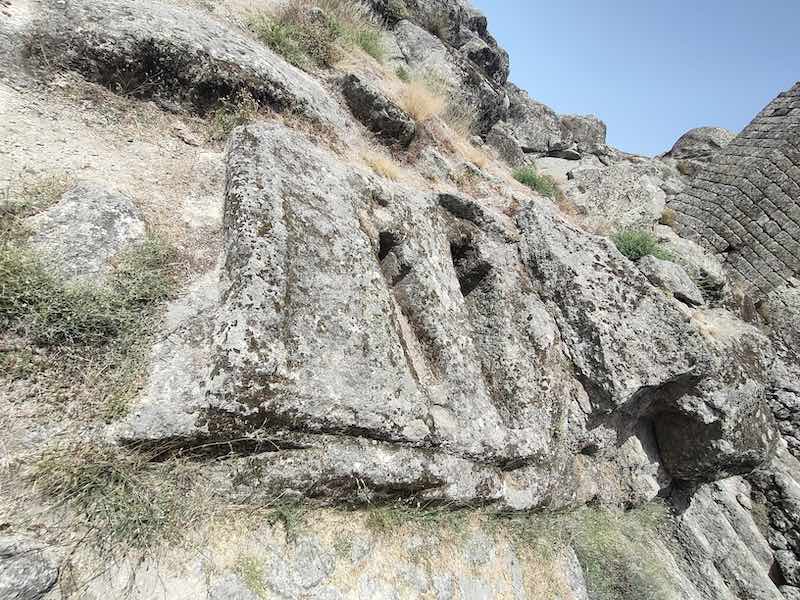
Capela de Sao Joao
And finally, my favourite view from Monsanto….the beautiful backdrop behind the reconstructed arch of Capela de Sao Joao. In a flat rocky nook on the castles Eastern flank, you can find the ruins of St John’s chapel. Very little is known about the chapel, but they did find 16th Century tiles in the ruin, indicating that it had been used for worship up to the late 18th Century (it was also included in a register for religious buildings on Monsanto). It was a small building consisting of a nave, a sanctuary and a single axiel door. The arch was recently reconstructed and was hastily executed (it may not be accurate), but nonetheless it offers a spectacular viewpoint. You can see as far as the outskirts of Castelo Branco.
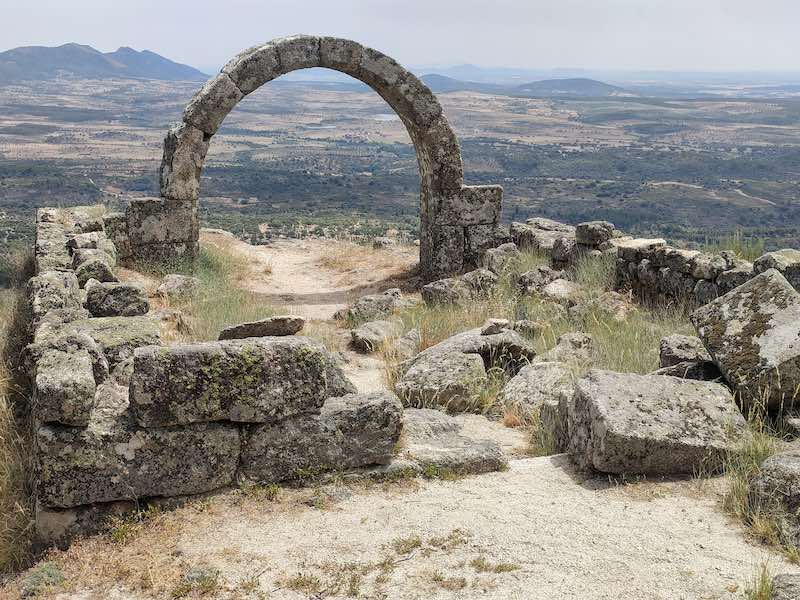
Where to eat and drink in Monsanto
I recommend that you stop for a drink in my favourite tavern in Monsanto – Taverna Lusitania. This tavern is also a BnB if you are looking to stay over. They have some amazing liqueurs including the Ginjinha and almond liqueur.
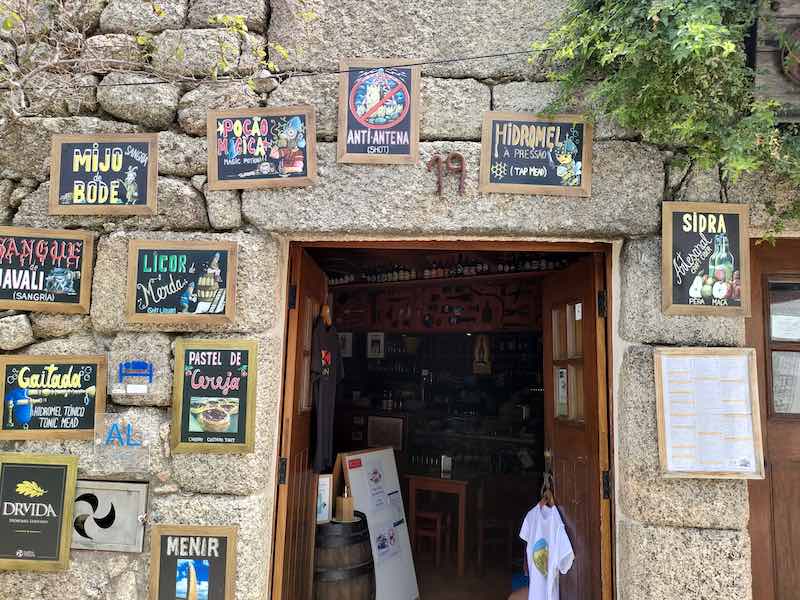
Lunch or dinner at Casa da Gruta is highly recommended – they have their own local wine selection and amazing Bacallau (cod fish), which will set you back around 20€ for this plus a couple of drinks.
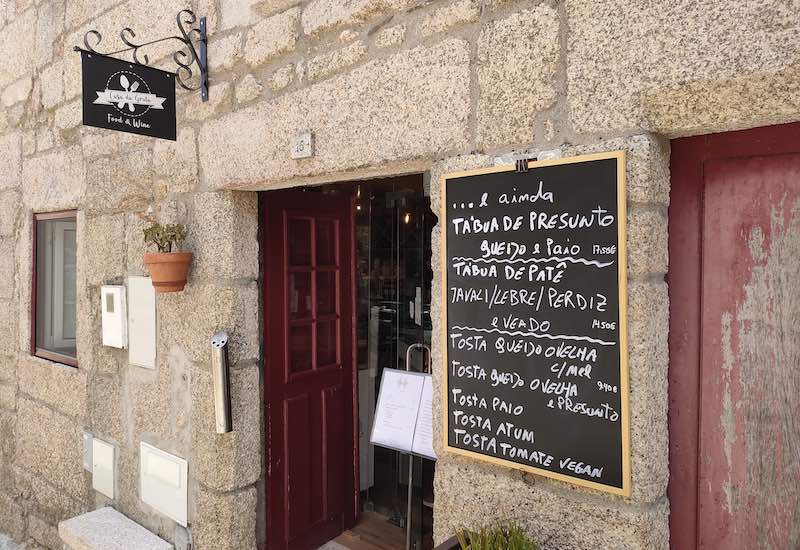
Oh, and don’t forget your Lonely Planet Portugal…
Further Reading on Portugal
I hope that you enjoyed my guide to Monsanto – I’m sure that you will agree it is a spectacular place to spend a morning or an afternoon. Portugal is one of my favourite countries to visit and I now class it as my second home, so I hope that you will take a look at a few more of my Portugal blog articles…
- Castelo Branco travel guide
- Is Lisbon worth visiting?
- Idanha-a-Velha
- Is Aveiro worth visiting?
- Guarda Portugal – The Ultimate Guide
- Things to do in Bragança Portugal

